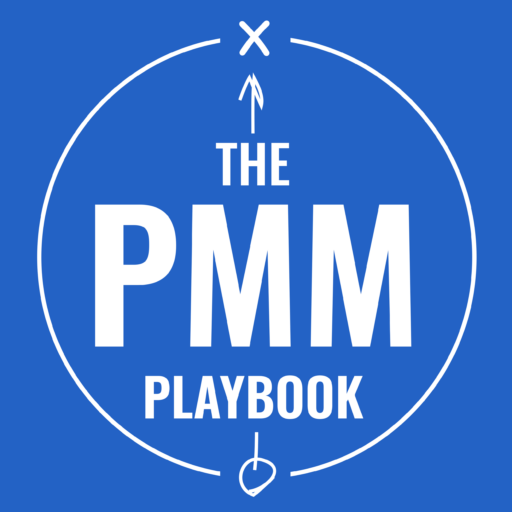Before I became a Product Marketing Manager, I started off my career as a Marketing Specialist. In this role, I learned about a marketing framework called the Marketing Mix, commonly called the 4Ps of Marketing. The 4 Ps include Product, Price, Place, and Promotion and are commonly used by Marketers to strategically position their products in the market and optimize their marketing strategies. I bring up the 4Ps in this blog because I understand that not everyone who works in product marketing or is trying to transition into a product marketing role will be familiar with the model due to moving into a product marketing role from a field outside of marketing. Since part of a GTM framework requires a PMM to manage the marketing strategy for their product launch, learning how traditional marketers optimize their marketing strategies would be beneficial.
Understanding Your Marketing Strategy
The core of a successful GTM launch lies in a well-defined marketing strategy. This strategy involves thorough research and a deep understanding of your product’s unique attributes. It’s about more than just promoting a product; it’s about strategically positioning your product in the market to maximize awareness among your target audience. A robust marketing strategy ensures that all marketing and product promotion aspects are cohesively directed toward achieving your product’s objectives, thereby aligning your entire organization.
The Marketing Mix: Adapting the 4Ps to Modern Needs
Traditionally, the marketing mix is framed around the 4Ps—Product, Price, Place, and Promotion. These elements help marketers optimize key factors influencing a product’s market success:
Product
Focuses on the goods or services a business offers to meet consumer demands. This includes everything from market research and product development to positioning, messaging, and detailing the features and benefits that meet customer needs.
Price
Involves determining the price point at which customers will find value in the product and make a purchase. Effective pricing strategies consider various models, competitive pricing analysis, and the product’s perceived value.
Promotion
Encompasses all strategies used to communicate the product’s value to the target audience. Techniques might include diverse marketing campaigns, content creation, leveraging customer feedback and advocacy, and continuously tracking the performance and impact of promotional activities.
Place
Relates to how the product is distributed and made available to the target market. This part of the mix addresses the selection of marketing and distribution channels, as well as sales enablement strategies to ensure the product reaches its intended consumers efficiently.
Replacing Pricing with another P: Planning
For complex products or those in large enterprises that require customized pricing, the role of PMMs is evolving. Often, the Pricing component of the 4Ps may see more involvement from Finance teams, particularly in setting and adjusting prices based on comprehensive market and competitor analysis. In such cases, it’s beneficial for PMMs to shift their focus from direct pricing strategies to broader planning activities.
In modern marketing strategies, especially for GTM launches, Planning becomes an essential addition to the traditional 4Ps. Planning emphasizes strategic and operational preparation necessary for a successful launch. This includes:
- GTM Planning: Developing a detailed roadmap that outlines all necessary steps and stages from product development to market introduction and beyond.
- Stakeholder Management: Identifying and engaging all key organizational stakeholders to ensure alignment and support for the GTM strategy.
- Contingency Planning: Preparing for potential challenges and having backup plans ready to ensure the smooth execution of the GTM launch.
The addition of Planning to the marketing mix reflects a more holistic approach, ensuring that all possible angles are covered and that the product launch can adapt to dynamic market conditions.
Execution and Continuous Improvement
Launching a product is just the beginning. The real magic happens when the strategies are put into action. Effective execution of your GTM plan requires constant monitoring and the flexibility to make adjustments based on real-time market feedback and performance metrics. This agile approach helps refine the GTM strategy, ensuring sustained market success.
A well-crafted marketing strategy for a GTM launch is not just about following a set template; it’s about understanding the nuances of the market and your product’s place. By thoroughly planning and preparing for every aspect of the launch, and by being adaptable in your approach, you can ensure that your product reaches its target audience and delivers on the promises made, paving the way for lasting success.
Conclusion
Navigating the complexities of a Go-To-Market (GTM) strategy can be daunting, especially for those new to product marketing or transitioning from other marketing roles. However, by leveraging the time-tested framework of the 4Ps—Product, Price, Place, and Promotion—and adapting it to include Planning as a critical component, marketers can create more comprehensive and flexible strategies tailored to the unique challenges of today’s market environments. Whether introducing a groundbreaking product or repositioning an existing one, understanding and applying these principles effectively can significantly enhance your marketing strategy and product success. Remember, the goal of any GTM strategy is not just to launch a product but to do so in a way that ensures sustained growth and relevance. By staying adaptable, continuously monitoring market feedback, and refining your approach, you can turn the theoretical framework of the 4Ps into practical success in the marketplace.

